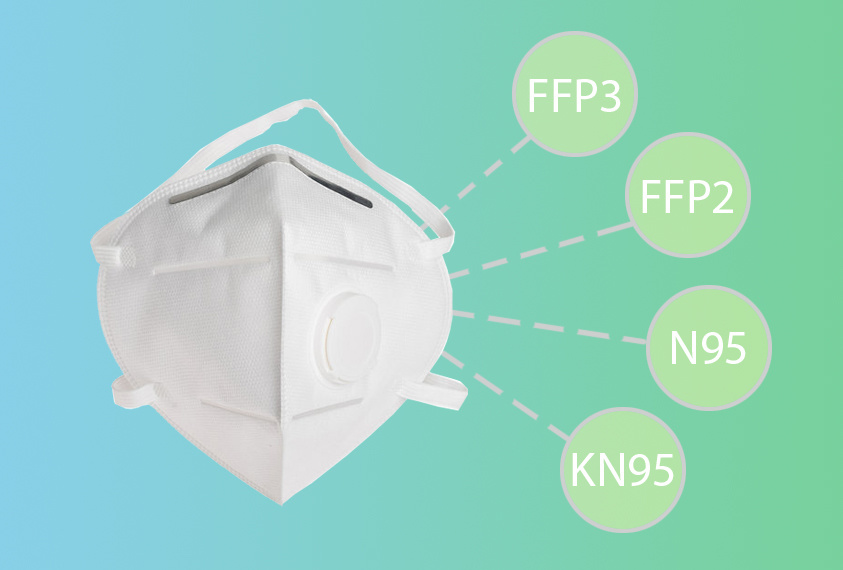What the difference in face masks?
- Posted on
- By Francesca Celano

With the coronavirus breakout in January 2020, the demand for masks has increased significantly. Disposable masks have been part of our normal lives. Over the past few months, various steps have been taken by each government to fight the coronavirus. In certain countries, masks are only mandatory indoors. Some states have asked you to wear masks only on public transport, while in other areas you have to wear masks everywhere, including public areas.
Germany and Austria, for example, have made it obligatory to wear FFP2 masks on public transport and in shops since January 2021. FFP masks offer the best protection against Coronavirus, and a number of people have opted to wear an FFP mask spontaneously to make themselves safer. Some people have preferred disposable masks, and some wear washable masks of different types.
But what do we know of the masks? There are several rumors about the effectiveness of coronavirus masks, but the distinctions between the different forms are still not clear.
That's why we decided to write this article. We want to help users get a better understanding of different masks for optimal use.
Want to know more about masks?
Since 1 June, the RIVM Started advising masks in public to wear masks in public transport, but what do we know about masks and how to use them in the most effective way?
We're happy to give you more detail on different types of masks! Read this article for more tips on how to use them! There are three Levels of protection of face masks, namely: non-medical masks, oral surgical masks and FFP masks.
Non-medical face mask
These masks do not have an official designation. It does not protect the wearer but helps reduce the chance of mouth and nose droplets spreading to the environment. This ensures that if you wear a non-medical mask, you can help to reduce the transmission of coronavirus. Unfortunately, these masks cannot protect you from those who have already infected.
Surgical face masks
This mask does not fully protect the wearer from outside viruses because the mask does not close There are 3 types of Surgical masks: types I, II and IIR. These are medical products for healthcare sectors. These masks protect the patient against microorganisms that come from the doctors.
tightly on the user's face. Particles can still enter through the air through the side of the mask.
Type I and Type IR face masks have a 95% bacterial filtration efficiency, whilst Type II and Type II R face masks have a 98% BFE. Respiratory capacity and tolerance to splashes are about the same for masks of type IR and type II R.
Type II face masks (EN14683) and type IIR masks (EN14683) are a 3-fold defensive facemask.
FFP2-FFP3- KN95-N95 face masks
FFP masks protect the wearer from inhaling all sorts of dangerous chemicals and viruses.
There are three classes: FFP1, FFP2 and FFP3 which can be distinguished on the basis of how effectively the mask filters the bacteria when inhaling toxic substances.
The masks FFP2, FFP3, KN95 and N95 differ in the method used to measure their filtration efficiency. This process is changed on the basis of where it is made since it meets the qualification guidelines laid down by the country in which the functionality of the equipment is tested. FFP2, FFP1 and FFP3 masks are regulated by European regulations, N95 masks are covered by American standards, KN95 masks are certified in China.
Based on the different methods adopted to test the devices is resulted that FFP2 masks have more than 94% of filtration efficiency, N95 and KN95 more than 95% and FFP3 99%.
FFP3 facial masks are the most effective for filtration. These masks are closer to the ears and normally have respiratory ventilation to help respire. It also decreases moisture retention and increases the duration of a mask. FFP3 masks are normally used for the handling of chemicals. Breathing masks FFP2, FFP3, N95 and others cover the user transmitted by a virus.
WHY DO SOME FACE MASKS HAVE VALVES?
Other types of masks have a one-way plastic valve on the front that makes it easier to breathe. The valve is closed when you breathe, but it opens to allow the exhalation to be unfiltered when you breathe in. These masks were first designed with industrial valves to facilitate the ventilation of staff in factories in need of face shielding. The valve is closed when you respire, but it opens up to allow the exhalation to be unfiltered as you breathe in. Is it clear now the differences between FFP2, FFP3, KN95 and N95?
We hope we have informed you well. If you are still interested in buying a face mask feel free to take a look at our catalogue. Do you have more questions regarding our masks? Feel free to contact us!
Stay safe!

